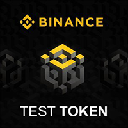-
 Bitcoin
Bitcoin $96,387.8679
2.14% -
 Ethereum
Ethereum $1,827.5248
1.41% -
 Tether USDt
Tether USDt $0.9999
0.01% -
 XRP
XRP $2.1378
1.04% -
 BNB
BNB $604.2110
0.89% -
 Solana
Solana $145.7139
0.83% -
 USDC
USDC $1.0000
0.00% -
 Dogecoin
Dogecoin $0.1717
1.36% -
 Cardano
Cardano $0.6756
2.42% -
 TRON
TRON $0.2442
-1.03% -
 Sui
Sui $3.3757
0.81% -
 Chainlink
Chainlink $13.8755
2.39% -
 Avalanche
Avalanche $19.7867
0.19% -
 UNUS SED LEO
UNUS SED LEO $8.7336
0.83% -
 Stellar
Stellar $0.2604
0.80% -
 Shiba Inu
Shiba Inu $0.0...01273
0.44% -
 Toncoin
Toncoin $2.9957
-0.36% -
 Hedera
Hedera $0.1759
1.18% -
 Bitcoin Cash
Bitcoin Cash $371.4131
3.31% -
 Litecoin
Litecoin $91.2861
10.54% -
 Hyperliquid
Hyperliquid $20.7053
2.21% -
 Polkadot
Polkadot $3.9445
1.29% -
 Dai
Dai $1.0001
0.00% -
 Monero
Monero $287.7518
2.87% -
 Bitget Token
Bitget Token $4.3110
0.38% -
 Ethena USDe
Ethena USDe $1.0004
0.02% -
 Pi
Pi $0.5802
-1.06% -
 Pepe
Pepe $0.0...07980
0.81% -
 Bittensor
Bittensor $370.2201
-0.85% -
 Uniswap
Uniswap $4.9002
-0.39%
Where can I find the current average holding cost of XRP in the market?
Use on-chain analytics platforms like Glassnode and CryptoQuant, or leverage social media and community insights to estimate the average holding cost of XRP.
Apr 22, 2025 at 11:00 pm
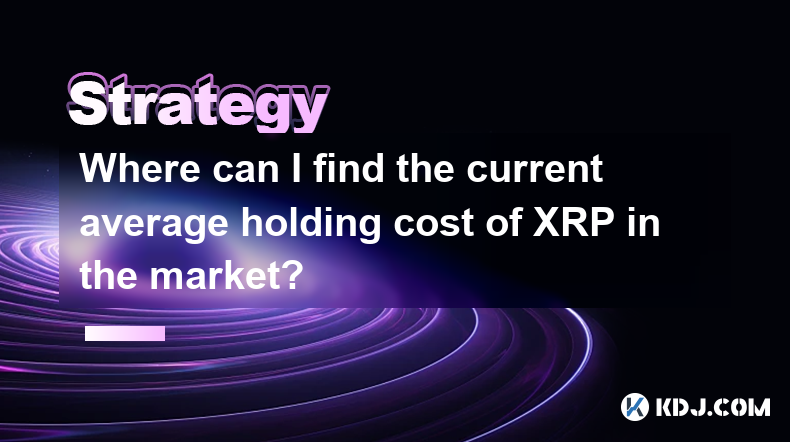
Where can I find the current average holding cost of XRP in the market?
Finding the current average holding cost of XRP in the market can be a challenging task, as this information is not readily available on most mainstream cryptocurrency platforms. However, there are several methods and resources that you can use to estimate this figure. In this article, we will explore various ways to find the average holding cost of XRP, including using on-chain analytics platforms, social media insights, and community-driven data aggregation.
Understanding Average Holding Cost
Before diving into the methods of finding the average holding cost of XRP, it is important to understand what this metric represents. The average holding cost of a cryptocurrency like XRP is the average price at which all current holders of the asset acquired their tokens. This figure can provide valuable insights into market sentiment and potential price movements. If the average holding cost is significantly lower than the current market price, it may indicate that many holders are in profit and could be more likely to sell, potentially leading to increased selling pressure.
Using On-Chain Analytics Platforms
One of the most reliable ways to estimate the average holding cost of XRP is by using on-chain analytics platforms. These platforms analyze blockchain data to provide insights into various metrics, including holding costs. Some popular on-chain analytics platforms that you can use include:
Glassnode: Glassnode offers a wide range of on-chain metrics for various cryptocurrencies, including XRP. To find the average holding cost of XRP on Glassnode, follow these steps:
- Visit the Glassnode website and sign up for an account if you haven't already.
- Navigate to the XRP dashboard.
- Look for the "Realized Price" or "Realized Cap" metrics, which can give you an idea of the average holding cost.
CryptoQuant: CryptoQuant is another platform that provides on-chain data for XRP. To find the average holding cost on CryptoQuant, follow these steps:
- Visit the CryptoQuant website and create an account.
- Go to the XRP section.
- Search for metrics like "Realized Price" or "Realized Cap" to estimate the average holding cost.
Keep in mind that these platforms may require a subscription for full access to their data, but they often provide some free metrics that can still be useful.
Leveraging Social Media and Community Insights
Another way to estimate the average holding cost of XRP is by leveraging social media and community insights. Many XRP holders share their purchase prices and holding costs on platforms like Twitter, Reddit, and various XRP-focused forums. While this method is less precise than on-chain analytics, it can still provide a rough estimate of the average holding cost. Here's how you can gather this information:
- Twitter: Use hashtags like #XRP and #XRPHolders to find tweets from XRP holders discussing their purchase prices. You can also follow influential XRP community members who often share insights on market sentiment and holding costs.
- Reddit: Join subreddits like r/Ripple and r/XRP to read posts and comments from XRP holders. Look for threads where users discuss their average holding costs.
- XRP Forums: Websites like XRP Chat and XRP Community often have threads dedicated to discussing holding costs and market sentiment.
By aggregating this data, you can get a sense of the range of holding costs among XRP holders, which can help you estimate the average.
Community-Driven Data Aggregation
Some cryptocurrency communities have taken it upon themselves to aggregate data on holding costs. These community-driven initiatives can provide valuable insights into the average holding cost of XRP. One such platform is CoinGecko, which sometimes includes community-reported data on holding costs. To find this information on CoinGecko, follow these steps:
- Visit the CoinGecko website.
- Search for XRP and go to its detailed page.
- Look for any sections or tabs that mention "Community Data" or "Holder Statistics."
While this data may not be as precise as on-chain analytics, it can still offer a useful perspective on the average holding cost of XRP.
Analyzing Exchange Data
Some cryptocurrency exchanges provide data on the average purchase price of XRP for their users. While this data is limited to the users of a specific exchange, it can still offer insights into the average holding cost. Here's how you can find this information:
Binance: Binance offers a feature called "Average Buying Price" for some cryptocurrencies, including XRP. To find this data on Binance, follow these steps:
- Log into your Binance account.
- Go to the XRP trading page.
- Look for the "Average Buying Price" metric, which shows the average price at which users on Binance have purchased XRP.
Coinbase: Coinbase also provides some data on user purchase prices. To find this information on Coinbase, follow these steps:
- Log into your Coinbase account.
- Navigate to the XRP page.
- Check for any metrics related to average purchase prices or holding costs.
Keep in mind that this data is specific to the users of these exchanges and may not reflect the broader market's average holding cost.
Using Cryptocurrency Portfolio Trackers
Cryptocurrency portfolio trackers like Blockfolio and Delta allow users to input their purchase prices for various cryptocurrencies, including XRP. While this data is user-generated and not necessarily representative of the entire market, it can still provide insights into the average holding cost. Here's how you can use these platforms:
Blockfolio: To find the average holding cost of XRP on Blockfolio, follow these steps:
- Download and install the Blockfolio app.
- Add XRP to your portfolio and input your purchase prices.
- Look for any features that aggregate user data to estimate the average holding cost.
Delta: To find the average holding cost of XRP on Delta, follow these steps:
- Download and install the Delta app.
- Add XRP to your portfolio and input your purchase prices.
- Check for any features that provide insights into the average holding cost based on user data.
These platforms can be useful for getting a rough estimate of the average holding cost, especially if you are part of a large community of users who input their data.
Frequently Asked Questions:
Can I find the average holding cost of XRP on mainstream cryptocurrency websites like CoinMarketCap or CoinGecko?
Mainstream cryptocurrency websites like CoinMarketCap and CoinGecko typically do not provide the average holding cost of XRP. However, CoinGecko sometimes includes community-reported data on holding costs, which can be found on the detailed page for XRP.
Is the average holding cost of XRP the same as the current market price?
No, the average holding cost of XRP is not the same as the current market price. The average holding cost represents the average price at which all current holders of XRP acquired their tokens, while the current market price is the price at which XRP is currently trading.
How often does the average holding cost of XRP change?
The average holding cost of XRP changes whenever new transactions occur on the blockchain. As new holders buy XRP at different prices, the average holding cost adjusts to reflect these new purchases.
Can I use the average holding cost of XRP to predict future price movements?
While the average holding cost of XRP can provide insights into market sentiment and potential selling pressure, it should not be used as the sole indicator for predicting future price movements. Other factors, such as market trends, news, and overall cryptocurrency market conditions, also play a significant role in determining XRP's price.
Disclaimer:info@kdj.com
The information provided is not trading advice. kdj.com does not assume any responsibility for any investments made based on the information provided in this article. Cryptocurrencies are highly volatile and it is highly recommended that you invest with caution after thorough research!
If you believe that the content used on this website infringes your copyright, please contact us immediately (info@kdj.com) and we will delete it promptly.
- US Overtakes China as Top Bitcoin Mining Hub, Prompting Questions About How Beijing Will Respond
- 2025-05-07 14:05:13
- Indonesia suspends Worldcoin, the eyeball-scanning cryptocurrency project co-founded by OpenAI CEO Sam Altman
- 2025-05-07 14:05:13
- Bitcoin (BTC) Surges to New All-Time High of $97,388 Ahead of Fed FOMC Meeting
- 2025-05-07 14:00:12
- The crypto market intensifies due to growing opportunities as Dogecoin (DOGE) and Mutuum Finance (MUTM) attract investing interest.
- 2025-05-07 14:00:12
- The heads on coins are usually reserved for kings and queens, but how about Australian comedy royalty?
- 2025-05-07 13:55:13
- Elizabeth Warren and Five Other Democratic Senators Sent a Joint Letter to Janet Yellen, Harshly Criticizing the Trump Administration's Plan to Include Crypto Assets in the National Strategic Reserves
- 2025-05-07 13:55:13
Related knowledge

Is THETA leverage trading risky? How to control the probability of liquidation?
May 07,2025 at 01:42pm
Introduction to THETA Leverage TradingLeverage trading in the cryptocurrency market, including with tokens like THETA, can be a powerful tool for traders looking to amplify their potential returns. However, it also comes with increased risks, particularly the risk of liquidation. Understanding these risks and learning how to manage them is crucial for a...
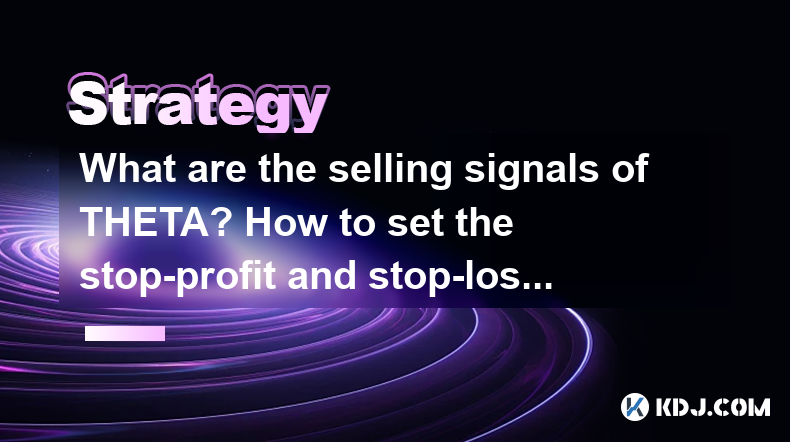
What are the selling signals of THETA? How to set the stop-profit and stop-loss more reasonably?
May 07,2025 at 11:35am
Understanding THETA and Its Market DynamicsTHETA is a blockchain-powered network designed specifically for video streaming. It aims to improve the efficiency and reduce the costs of video delivery through a decentralized system. As with any cryptocurrency, understanding the selling signals of THETA is crucial for investors looking to maximize their retu...
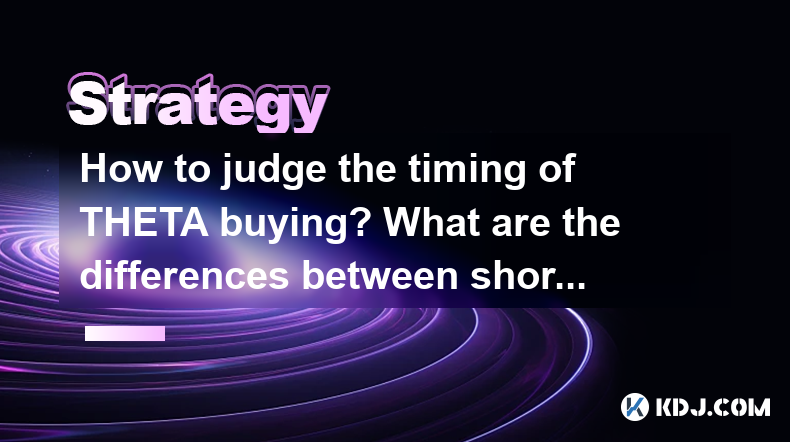
How to judge the timing of THETA buying? What are the differences between short-term and long-term strategies?
May 07,2025 at 12:01pm
When it comes to investing in cryptocurrencies like THETA, timing your purchase can significantly impact your investment's outcome. Understanding the best time to buy THETA involves analyzing market trends, understanding the project's fundamentals, and aligning your investment with your financial goals. This article will delve into how to judge the timi...
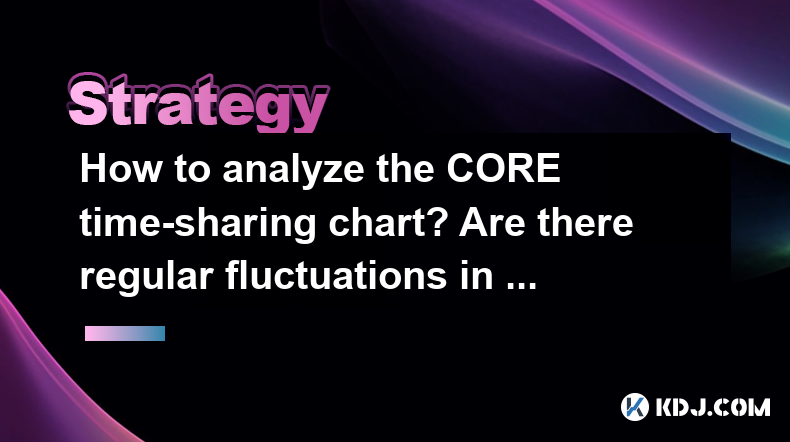
How to analyze the CORE time-sharing chart? Are there regular fluctuations in the early and late trading sessions?
May 07,2025 at 12:42pm
Analyzing the CORE time-sharing chart involves understanding the patterns and fluctuations in trading volume and price movements throughout the day. This analysis can help traders identify optimal times for entering or exiting trades. In this article, we will delve into how to analyze the CORE time-sharing chart and explore whether there are regular flu...
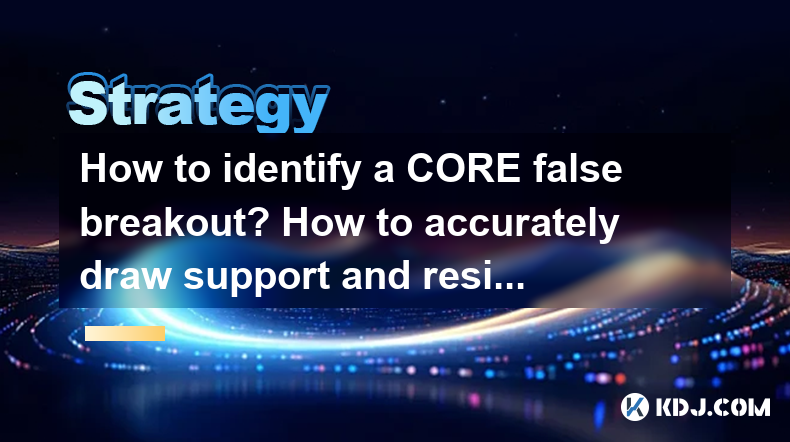
How to identify a CORE false breakout? How to accurately draw support and resistance lines?
May 07,2025 at 11:29am
Understanding CORE False BreakoutsIdentifying a CORE false breakout is crucial for traders in the cryptocurrency market as it can help prevent unnecessary losses and improve trading strategies. A CORE false breakout occurs when the price of a cryptocurrency appears to break through a significant support or resistance level but quickly reverses direction...
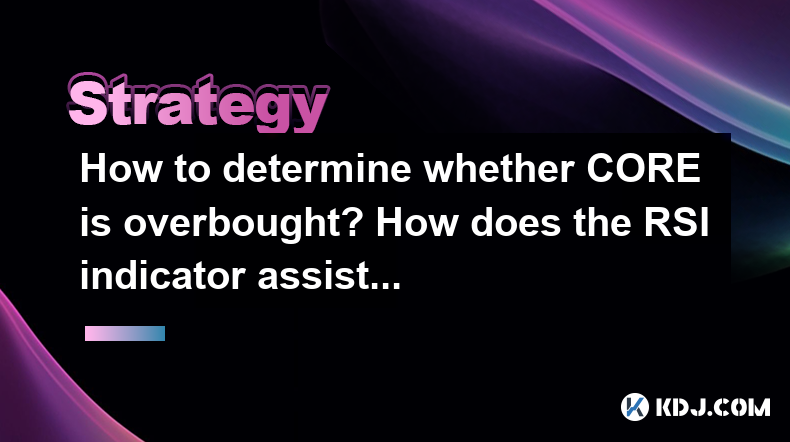
How to determine whether CORE is overbought? How does the RSI indicator assist in decision-making?
May 07,2025 at 09:42am
How to Determine Whether CORE is Overbought? How Does the RSI Indicator Assist in Decision-Making? In the world of cryptocurrency, understanding market indicators is crucial for making informed trading decisions. One such indicator is the Relative Strength Index (RSI), which can help determine whether a cryptocurrency like CORE is overbought. This artic...

Is THETA leverage trading risky? How to control the probability of liquidation?
May 07,2025 at 01:42pm
Introduction to THETA Leverage TradingLeverage trading in the cryptocurrency market, including with tokens like THETA, can be a powerful tool for traders looking to amplify their potential returns. However, it also comes with increased risks, particularly the risk of liquidation. Understanding these risks and learning how to manage them is crucial for a...

What are the selling signals of THETA? How to set the stop-profit and stop-loss more reasonably?
May 07,2025 at 11:35am
Understanding THETA and Its Market DynamicsTHETA is a blockchain-powered network designed specifically for video streaming. It aims to improve the efficiency and reduce the costs of video delivery through a decentralized system. As with any cryptocurrency, understanding the selling signals of THETA is crucial for investors looking to maximize their retu...

How to judge the timing of THETA buying? What are the differences between short-term and long-term strategies?
May 07,2025 at 12:01pm
When it comes to investing in cryptocurrencies like THETA, timing your purchase can significantly impact your investment's outcome. Understanding the best time to buy THETA involves analyzing market trends, understanding the project's fundamentals, and aligning your investment with your financial goals. This article will delve into how to judge the timi...

How to analyze the CORE time-sharing chart? Are there regular fluctuations in the early and late trading sessions?
May 07,2025 at 12:42pm
Analyzing the CORE time-sharing chart involves understanding the patterns and fluctuations in trading volume and price movements throughout the day. This analysis can help traders identify optimal times for entering or exiting trades. In this article, we will delve into how to analyze the CORE time-sharing chart and explore whether there are regular flu...

How to identify a CORE false breakout? How to accurately draw support and resistance lines?
May 07,2025 at 11:29am
Understanding CORE False BreakoutsIdentifying a CORE false breakout is crucial for traders in the cryptocurrency market as it can help prevent unnecessary losses and improve trading strategies. A CORE false breakout occurs when the price of a cryptocurrency appears to break through a significant support or resistance level but quickly reverses direction...

How to determine whether CORE is overbought? How does the RSI indicator assist in decision-making?
May 07,2025 at 09:42am
How to Determine Whether CORE is Overbought? How Does the RSI Indicator Assist in Decision-Making? In the world of cryptocurrency, understanding market indicators is crucial for making informed trading decisions. One such indicator is the Relative Strength Index (RSI), which can help determine whether a cryptocurrency like CORE is overbought. This artic...
See all articles














































































